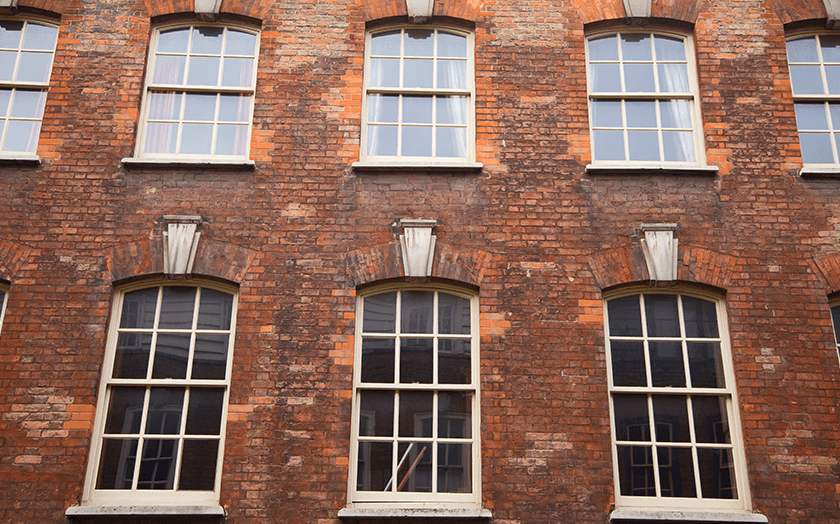The word sash has its origins in the french word “Chassis”, meaning frame. Victorian, Edwardian and Georgian architecture used sash windows extensively and they have become a symbol of vintage elegance throughout the history of architecture.
A sash window is made of one or more panels called “Sashes”. The window is divided into two parts – the Bottom sash and the Top sash. The movable panel of the window is called the Movable sash. The glass of the window is held within the sash and though most sash windows open vertically, a horizontal sliding sash or a “Yorkshire Light” can also be seen in some buildings. You can give your property a traditional look by incorporating sash windows in the architecture and improve the overall facade.
Sash Windows Types and Sizes
Sash windows come in many different configurations but the most common and the oldest configuration from Georgian and Victorian architecture is a six over six panel window consisting of three panes across and two panes up. This rule, however, is not set in stone and hand made units of different sizes were used well before the Victorian and Edwardian era in England where suburban houses were built using standard sashes of approximately 4 feet in width. Commonly called the Double Hung window style, where one sash is placed above a lower sash. The lower sash is movable and can slide up and down along the fixed, lower sash. In some older designs, the lower sash was fixed and the upper sash was movable, and this design is also used in some newer windows. A fixed lower sash is especially useful in households with children – who are at a risk of falling out of the window. Some designs allow for both sashes to be movable and tilted for making cleaning and maintenance easier.
Operating Principle
A counterweight made of heavy steel, lead or cast iron is housed within the window frame to balance the weight of the glazed panel. This counterweight, also called the “Sash Weight” is connected to the window by a braided cotton or polymer sash cord or chain depending on the design. The sash cord runs over a pulley at the top of the frame and some designs incorporate a spring balance. If the sash cord snaps, then the only method of repair is disassembly or removal/destruction of the trim pieces to gain access for repair. Sash windows are a huge advantage for providing efficient cooling of premises in warm weather. The warm air in a room can escape easily if both the top sash and the bottom sash are opened in equal amounts, allowing a flow of cool air from outside into the room through the bottom opening.
Sash Window Construction
With the advent of technology, wooden panels have made way for stronger, more durable aluminium and PVC panels, but the old buildings with their wooden sash windows still retain the charm after all these years.
Depending upon the aesthetic style desired, the sashes may be constructed using softwood, with a single glazed type construction or with modern materials using a double glazed type construction. Victorian styled sash windows sometimes incorporate muntins or glaze bars that give the appearance of the window being made up of several smaller sashes when in reality each sash consists of only one large, double glazed unit.
Known Issues
Wooden frames are susceptible to rotting, swelling and pests. Due to shrinking and expansion of wood with temperature changes, the sashes may get distorted and fail to operate smoothly. Fogging is a major problem in Double Glazed units and is a result of improperly installed gaskets or gaskets that have worn out due to little or no maintenance over the years. Damaged gaskets allow gas to escape, compromising the window’s insulating properties and as condensation build, light from outside is obscured and the energy efficiency of the entire building is reduced. The services of a window defogging company are ultimately required as a solution to this problem. Well maintained sashes, however, despite their high costs are known to last many generations and are of huge aesthetic and functional value, whether you’re building a new property or renovating an existing one.


Recent Comments